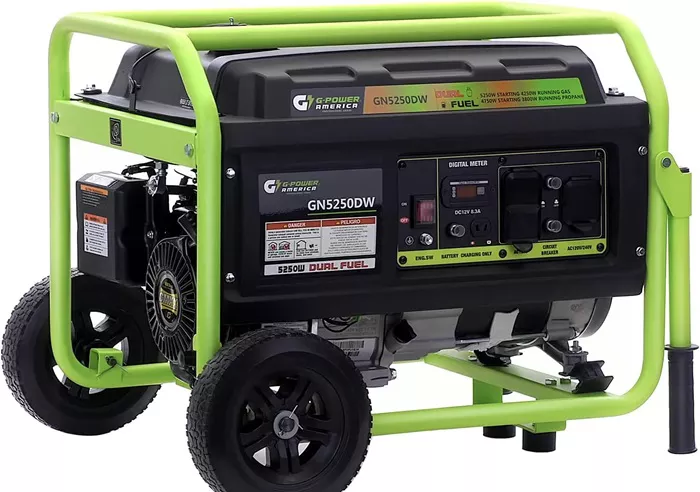When it comes to ensuring uninterrupted power for your home, selecting the right generator is crucial. Generators are rated in kilovolt-amperes (kVA), a unit that measures apparent power. Choosing the correct kVA rating for your home generator ensures that it can handle your household’s electrical load without overloading or underperforming. This article explores how to determine the appropriate kVA rating for a home generator, factors to consider when sizing, and practical examples to help you make an informed decision.
Understanding kVA and Its Importance
kVA (kilovolt-amperes) is a measure of the total power a generator can deliver, including both active power (measured in kilowatts, kW) and reactive power. While kW represents the actual power used by appliances, kVA accounts for the total power capacity required to run those appliances, including inefficiencies and startup surges. For residential purposes, generators are often sized based on kVA to ensure they can handle the initial surge of power when appliances start up, as well as the continuous load.
Factors to Consider When Sizing a Home Generator
Total Electrical Load: The first step in determining the right kVA rating is to calculate your home’s total electrical load. This includes all the appliances, lighting, and systems you want to power during an outage. Make a list of essential items, such as refrigerators, air conditioners, heating systems, lights, and electronics, and note their power requirements in watts or kilowatts.
Starting vs. Running Power: Many appliances, particularly those with motors (e.g., air conditioners, refrigerators, and pumps), require significantly more power to start up than to run continuously. This starting surge, also known as inrush current, must be accounted for when sizing your generator. Failing to do so can result in an overloaded generator that trips or fails to start critical appliances.
Phases of Power: Homes typically use single-phase power, while larger properties or commercial buildings may use three-phase power. Ensure the generator you choose matches your home’s power phase. Single-phase generators are most common for residential use.
Fuel Type and Efficiency: The type of generator (diesel, propane, natural gas, or gasoline) can influence its efficiency and power output. Diesel generators, for example, are known for their durability and efficiency, while natural gas generators offer convenience and cleaner operation.
Future Needs: Consider whether your power needs might increase in the future. If you plan to add more appliances or expand your home, it’s wise to choose a generator with a slightly higher kVA rating to accommodate future growth.
Calculating the Required kVA for Your Home
To determine the appropriate kVA rating for your home generator, follow these steps:
List Essential Appliances: Identify the appliances and systems you want to power during an outage. Common items include refrigerators, lights, HVAC systems, water heaters, and electronics.
Determine Power Requirements: Check the nameplate or user manual of each appliance to find its power rating in watts or kilowatts. For motor-driven appliances, note both the running wattage and the starting wattage.
Calculate Total Load: Add up the running wattage of all essential appliances. Then, identify the appliance with the highest starting wattage and add that surge to the total running wattage. This will give you the peak load your generator must handle.
Convert to kVA: To convert the total wattage to kVA, divide the total wattage by 1,000 and then by the power factor (typically 0.8 for residential generators).
Practical Examples
Small Home or Apartment: A small home or apartment with basic appliances (e.g., refrigerator, lights, TV, and a few outlets) may only require a 5–7 kVA generator.
Medium-Sized Home: A medium-sized home with additional appliances like an air conditioner, water heater, and washing machine may need a 10–15 kVA generator.
Large Home or Estate: A large home with multiple air conditioners, a well pump, and high-power appliances may require a 20–30 kVA generator or larger.
Conclusion
Choosing the right kVA generator for your home is essential for ensuring reliable backup power during outages. By calculating your home’s total electrical load, accounting for starting surges, and considering future needs, you can select a generator that meets your requirements without overspending. Whether you live in a small apartment or a large estate, understanding your power needs and the basics of generator sizing will help you make an informed decision. With the right generator in place, you can enjoy peace of mind knowing that your home will remain powered, no matter what challenges arise.

